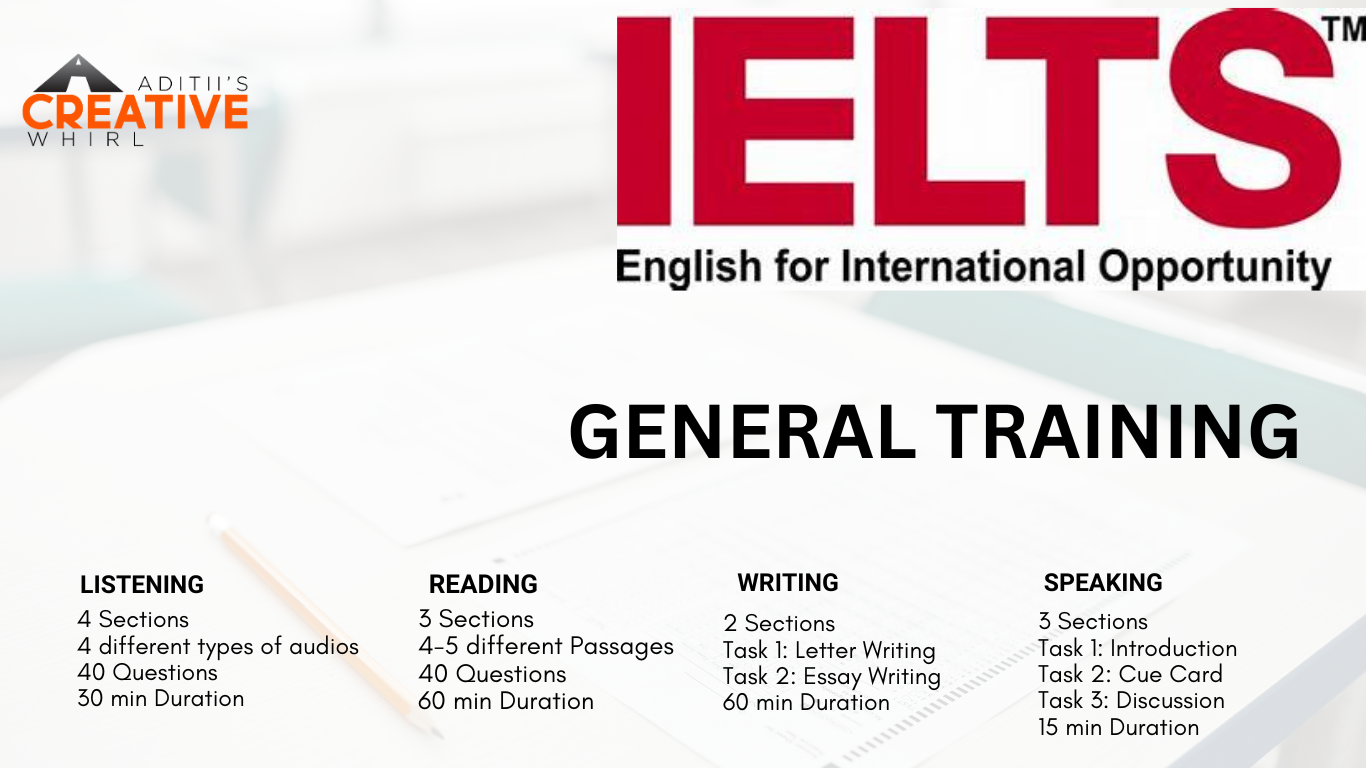IELTS GENERAL

About Course
The IELTS General Training test is suitable for those applying to study below degree level. This includes an English-speaking school or college. It can also be taken for work experience or other employment training.
IELTS General Training is also required for migration to Australia, Canada, New Zealand and the UK. The test features everyday English language skills that you will need in social and workplace environments.
Test Format comprises 4 modules – Reading, Writing, Listening and Speaking.
The Speaking and Listening tests are the same in both the Academic and the General Training tests, but the Reading and Writing tests are different.
Listening
The paper has four parts, with ten questions in each part. The questions are in the same order as the information in the recording, so the answer to the first question will be before the answer to the second question, and so on.
Parts 1 and 2 deal with everyday, social situations. There is a conversation between two speakers in Part 1 (for example, a conversation about travel arrangements). Only one person speaks in Part 2 (for example, a speech about local facilities).
Parts 3 and 4 deal with educational and training situations. In Part 3 there is a conversation between two main speakers (for example, two university students in discussion, perhaps guided by a tutor). In Part 4 only one person speaks on an academic subject.
You will hear the recordings once only. Different accents, including British, Australian, New Zealand and North American, are used.
Time allowed: Approximately 30 minutes (plus 10 minutes to transfer your answers to an answer sheet)
Number of parts: 4
Number of questions: 40
Marking: Each correct answer receives 1 mark. Your final score is given as a band score in whole or half bands, e.g. 5.5 or 7.0.
Reading
There are three sections of increasing difficulty. Section 1 may contain two or three short texts or several shorter texts. Section 2 contains two texts. In Section 3, there is one long text.
Time allowed: 60 minutes (including transfer time)
Number of sections: 3; the total text length is 2150–2750 words
Number of questions: 40
Marking: Each correct answer receives 1 mark. Your final score is given as a band score from 1–9 in whole or half bands, e.g. 3 or 8.5.
Writing
There are two Writing tasks and BOTH must be completed.
In Task 1, you have to respond to a situation by writing a letter, for example, asking for information or explaining a situation. You need to write at least 150 words in about 20 minutes.
In Task 2, you are given a point of view, argument or problem which you need to discuss. You need to write at least 250 words in about 40 minutes
Marking
Certificated IELTS examiners assess your performance on each Writing task. There are four assessment criteria (things which the examiner thinks about when deciding what score to give you):
- Task achievement/response
- Coherence and cohesion
- Lexical resource
- Grammatical range and accuracy.
Time allowed: 60 minutes
Number of tasks: 2
Marking: Task 2 contributes twice as much as Task 1 to the Writing score.
Speaking
The Speaking test is a face-to-face interview between the test taker and an examiner. The Speaking test is recorded.
There are three parts to the test, and each part follows a specific pattern of tasks in order to test your speaking ability in different ways.
Marking
Certificated IELTS examiners assess your speaking performance throughout the test. There are four assessment criteria (things which the examiner thinks about when deciding what score to give you):
- Fluency and coherence
- Lexical resource
- Grammatical range and accuracy
- Pronunciation.
Time allowed: 11–14 minutes
Number of parts: 3
What Will You Learn?
- Master the strategies to gain your desired band score in your first attempt.
Student Ratings & Reviews

